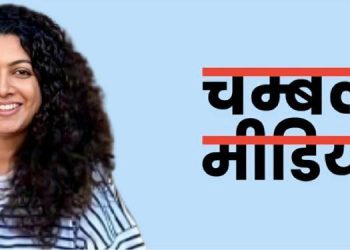The history of non-fiction content on Indian Television goes back to the early television broadcasting days- where the non-fiction content primarily involved educational shows and documentaries. The mid-90s witnessed the emergence of non-fiction content in the form of reality shows.
Moving forward the expectation of the industry is that OTT platforms, diversification in content categories like adventure, mythology, and biopics will drive consumption on non-fiction content. The focus will be on innovative storytelling that appeals to both broad and niche audiences. On linear TV there has been a reduction in non-fiction content. For TV channels non-fiction content a lot of the time is a loss leader and these shows run because they pull in eyeballs towards the profitable fiction content.
If one has to track the history of non-fiction content ‘Sansui Antakshari’ broadcast on ZEE TV became a household name and succeeded in garnering eyeballs. Later on shows like SaReGaMaPa were launched. ‘Kaun Banega Crorepati’ which was hosted by Amitabh Bachchan which succeeded in garnering popularity and viewership. It changed the fortunes of Star India and paved the way for other reality-based content like Indian Idol which was the Indian version of British show Pop Idol. The success of shows like “Bigg Boss” and “Indian Idol” in the 2000s further fortified the presence of non-fiction content on Indian TV.
The mid-2000s witnessed a rise in reality shows spanning many genres, from dance shows like “Dance India Dance” to adventure-based shows like “Fear Factor.” In the past few years, the landscape has shifted with the rise of streaming platforms, impacting the dynamics of television content.

Offering his perspective said TRA Research CEO N Chandramouli said, “In the last five years, Indian audiences have shown a preference for unique, relevant, and character-driven non-fiction content. Short formats and animated content for older audiences have gained popularity, indicating a shift towards diverse and inclusive storytelling”.
However, as mentioned earlier there is a reduction in non-fiction content on Indian Television with channels like Star Plus has gone to air fiction shows seven days of the week.

IPG Mediabrands India’s Chief Investment Officer Hema Malik says that there is a reduction and the biggest reason is the overall challenges faced by the Linear TV because it is stagnating or sinking as the viewers are moving towards digital.
She further said, “The reduction in non-fiction content can be attributed to reasons like they are relatively expensive in terms of cost of production, the international format shows will be more expensive as there is a licensing cost involved in it. Hence, it is rarely a break even for the channels. Many non-fiction shows that have been running for years yet have not made a break even, but channels continue to produce such shows as it becomes the USP of the channels. On the back of that they can promote the fiction shows (which are more consistent and profitable).”
“The certain kind of liner format shows which are far more profile in nature like – Shark Tank or Master Chef -has become pure digital. The shows have a little more evolved audience and the shows never got the right eyeballs on TV. Unfortunately, the measurement on Television is also an issue which is so much not the case with digital medium.” Malik added.
According to her, overall, the viewership numbers have gone down, profile format shows are not getting much attention. From that perspective- dance or singing reality shows continue to do better in South India as well, as it is catering to a mass audience. “Quite a few of them are also following local formats, which also helps the channel to maintain their P&L because they can build a basis on their own production requirements. All the international formats come with a lot of limitations and dos and donts.
“The reduction in non-fiction content on Indian television could be attributed to factors like changing viewer preferences, the rise of digital platforms, and growing popularity of scripted dramas or fiction shows which succeed in attracting larger audiences. Apart from that, the production costs and advertising revenue might influence Indian broadcasters’ decisions to opt for a certain type of content,” said an industry watcher.
“There was always a reduction in non-fiction content in Linear TV. A television channel cannot sustain with non-fiction content alone, you need them to garner the audience’s attention to the channel. Once it is done, then fiction shows are required to sustain the viewers. This is the two-step strategy for GEC channels. The growing popularity of digital platforms that offer a variety of non-fiction content could also divert viewers away from traditional television. Moreover, producing non-fiction content like reality shows, can be resource-intensive and may have varying degrees of audience appeal. Advertisers may use fiction content for their potential to capture a consistent viewer base, impacting the revenue model for broadcasters and influencing content choices,” said a media executive.

According to IN10 Media Network COO regional content Anup Chandrasekharan, there is no necessity for linear TV to do specific non- fiction shows as the content consumption of younger audiences happens on OTT platforms.
“The target audience for non-fiction is a largely younger audience of 15-24 years age group. There is a de-growth in consumption of Television content in that age group in the last five years. They have moved towards digital. Earlier, we used to do non-fiction content during weekday prime time, largely to garner the attention of younger audiences to the channel and then slowly get the older audience to follow. Now with the shift towards digital particularly OTT platforms, the younger audience consumption of non- fiction content happens there. Hence, there is no necessity for linear TV to do specific non- fiction shows,” he adds.
“Even if they do, the focus will largely be on Television plus Digital. People today have larger options for weekend content consumption, like the web series, outdoor events, there are much bigger creative outlets for people of all ages compared to the TV consuming era. The number of family audiences as viewers for shows like Big Boss and Kaun Banega crorepathy are limited, of late. Another issue is that non-fiction shows cost a lot of money, by making it standalone only for Television consumption, you will not be able to recover the cost- it will only be possible if it’s a TV and Digital package. That’s the reason why we see lesser non-fiction shows on Linear Television and a lot more dependence on fiction shows,” Chandrasekharan said.
Way Ahead
“The way out for the Linear TV is to create and curate non-fiction content which can be enjoyed by the 40 plus age category. Trying to attract younger audience with a stand-alone content will be difficult for the Television,” said Chandrasekharan.
Offering a media planner’s perspective Malik said, “If I speak from an advertiser perspective, what they seek is how their products are placed there, whether there is an integration opportunity. We evaluate a show more from what it is going to do for my brand in terms of placement opportunities, and how the brand stories can be told. The value of format shows is far beyond GRPs. If the format is not going to justify those factors, then a question arises on why they should onboard as sponsors or advertisers. That has been a challenge with international shows. Over the years, this has softened a lot, all shows are far more open to integrations, brand mentions etc, which was not the case earlier”.
“Not everybody is able to crack format shows from a business perspective. Sony has done a wonderful job in terms of format shows. There is a challenge of brand integration with the format shows, which should be taken care of. The shows can become a little massy because over a period of time, more and more segmented audiences will emerge. OTT will have a certain content and Linear TV may have content which will appeal to masses. Consumers will also evolve with time. Dance reality shows are always here to stay,” Malik added.
“The non-fiction genre in Indian television is poised for growth, driven by increased OTT viewership and diversification in content categories like adventure, mythology, and biopics. The focus will be on innovative storytelling that appeals to both broad and niche audiences,” concludes Chandramouli.
Feedback: [email protected]

















